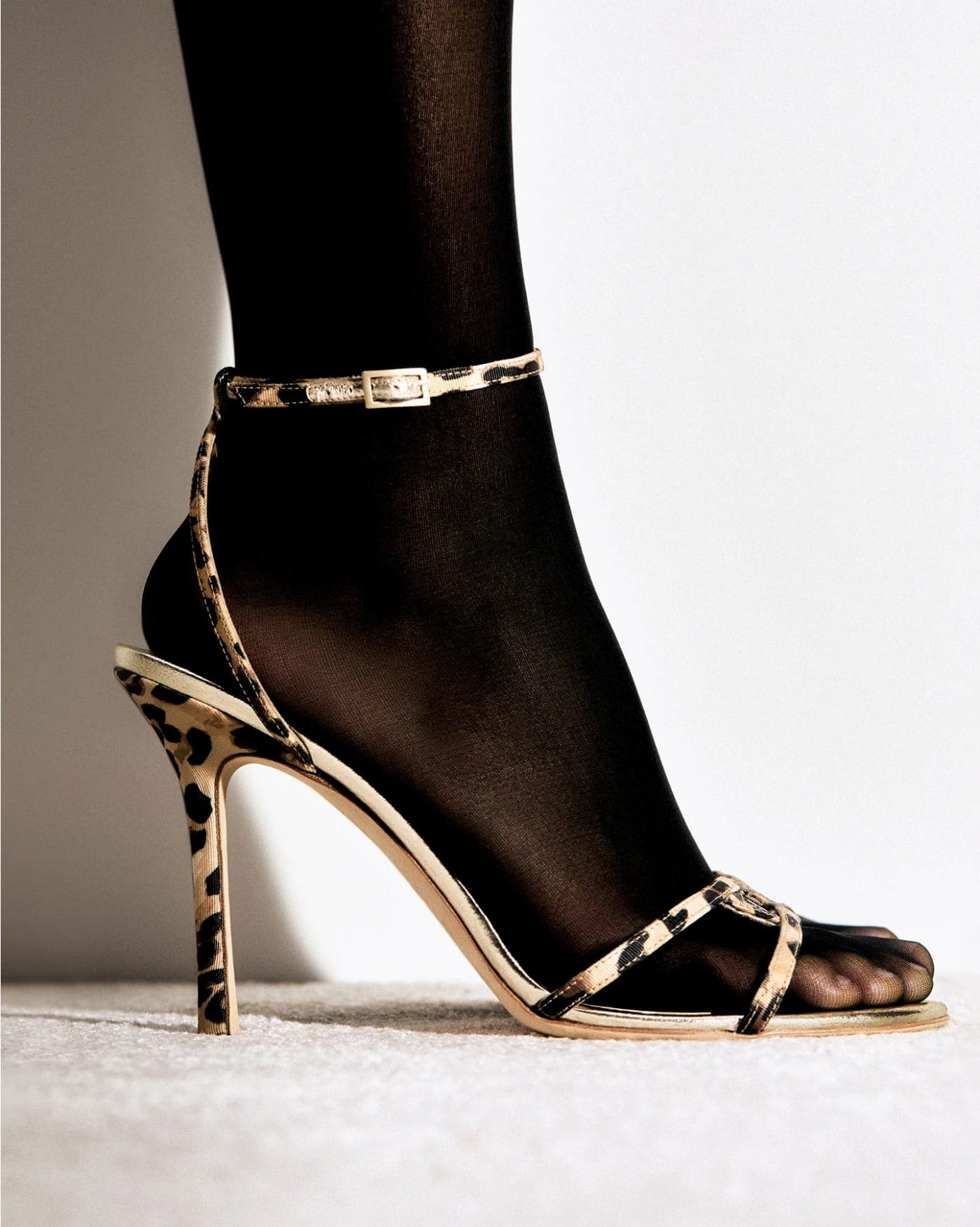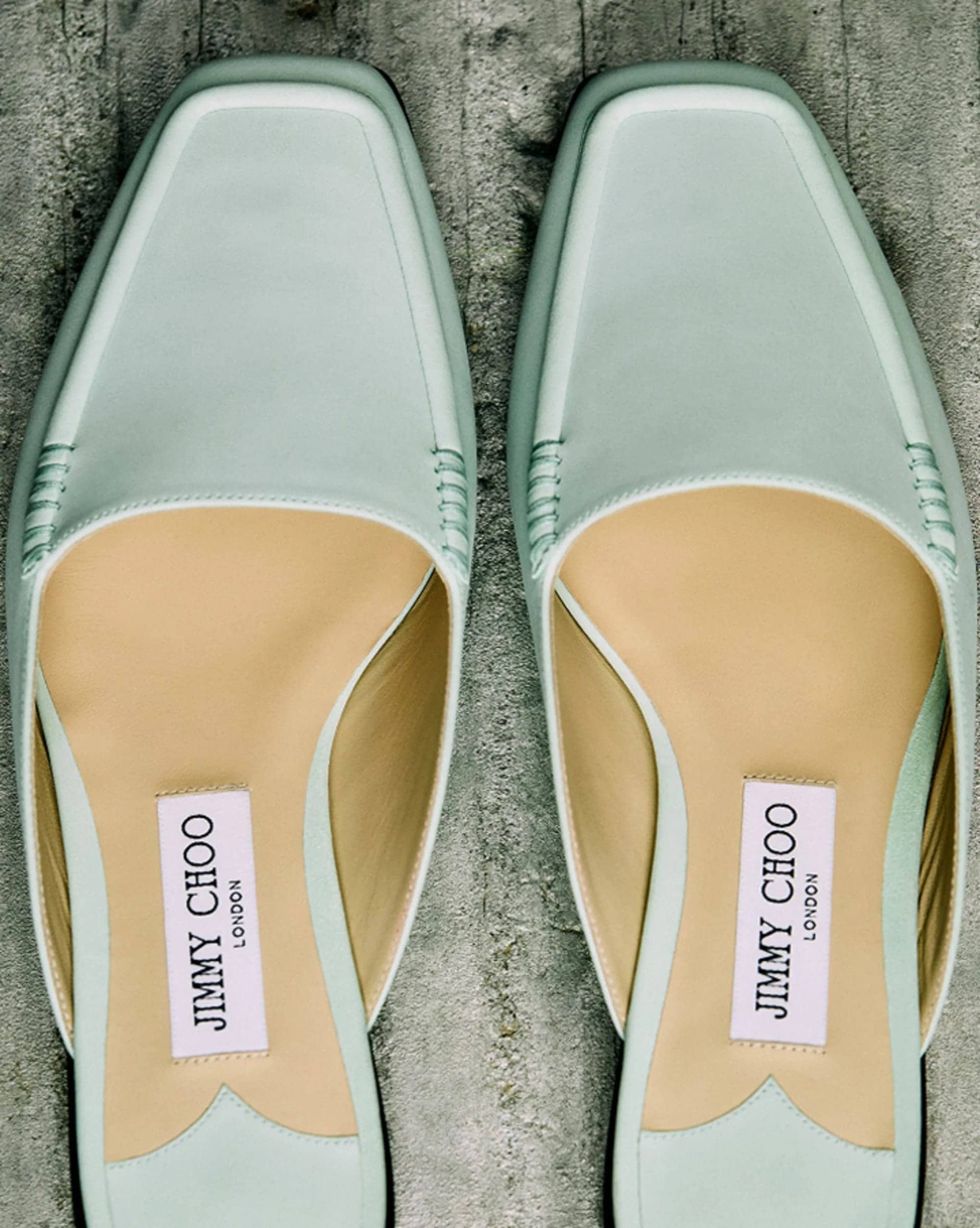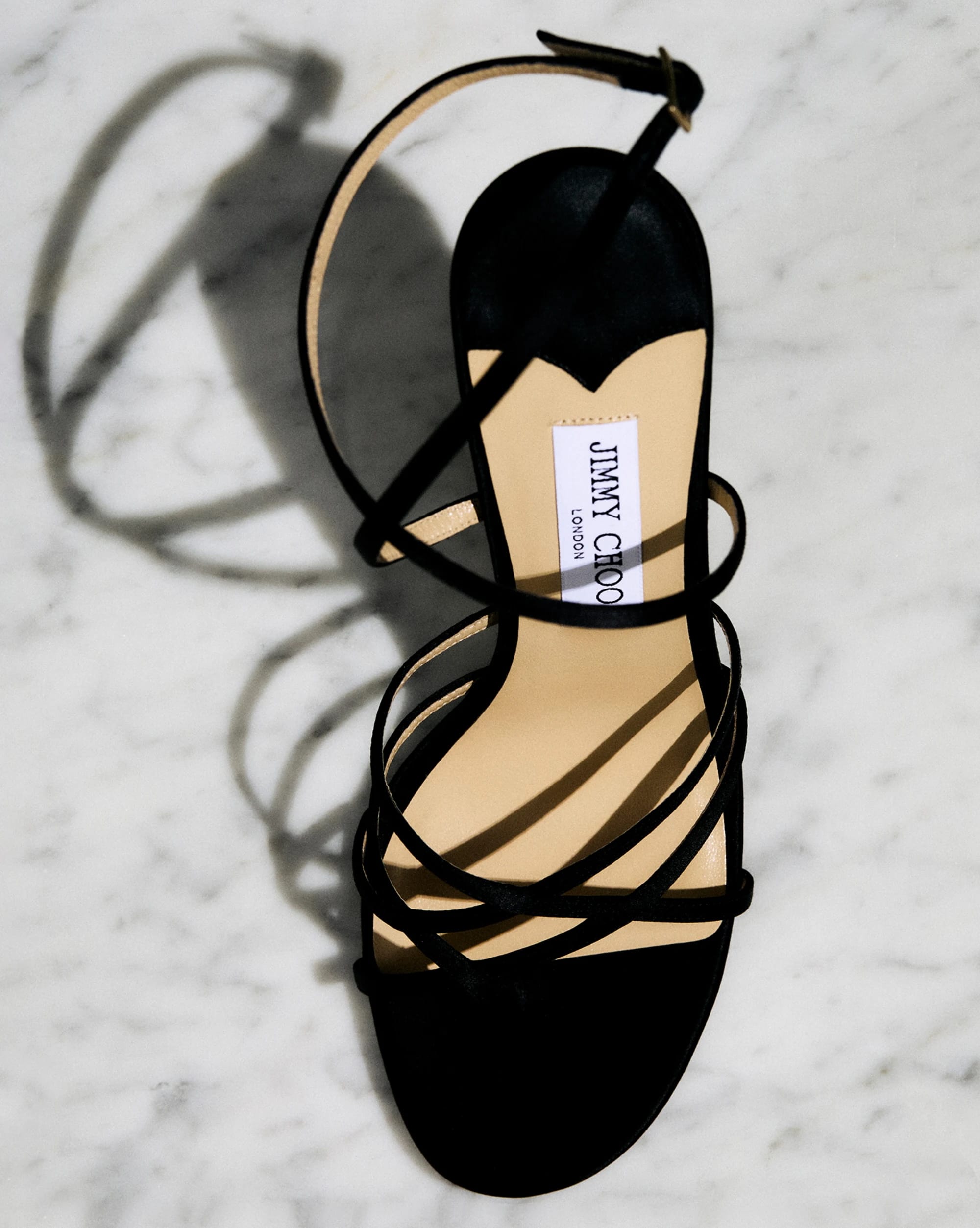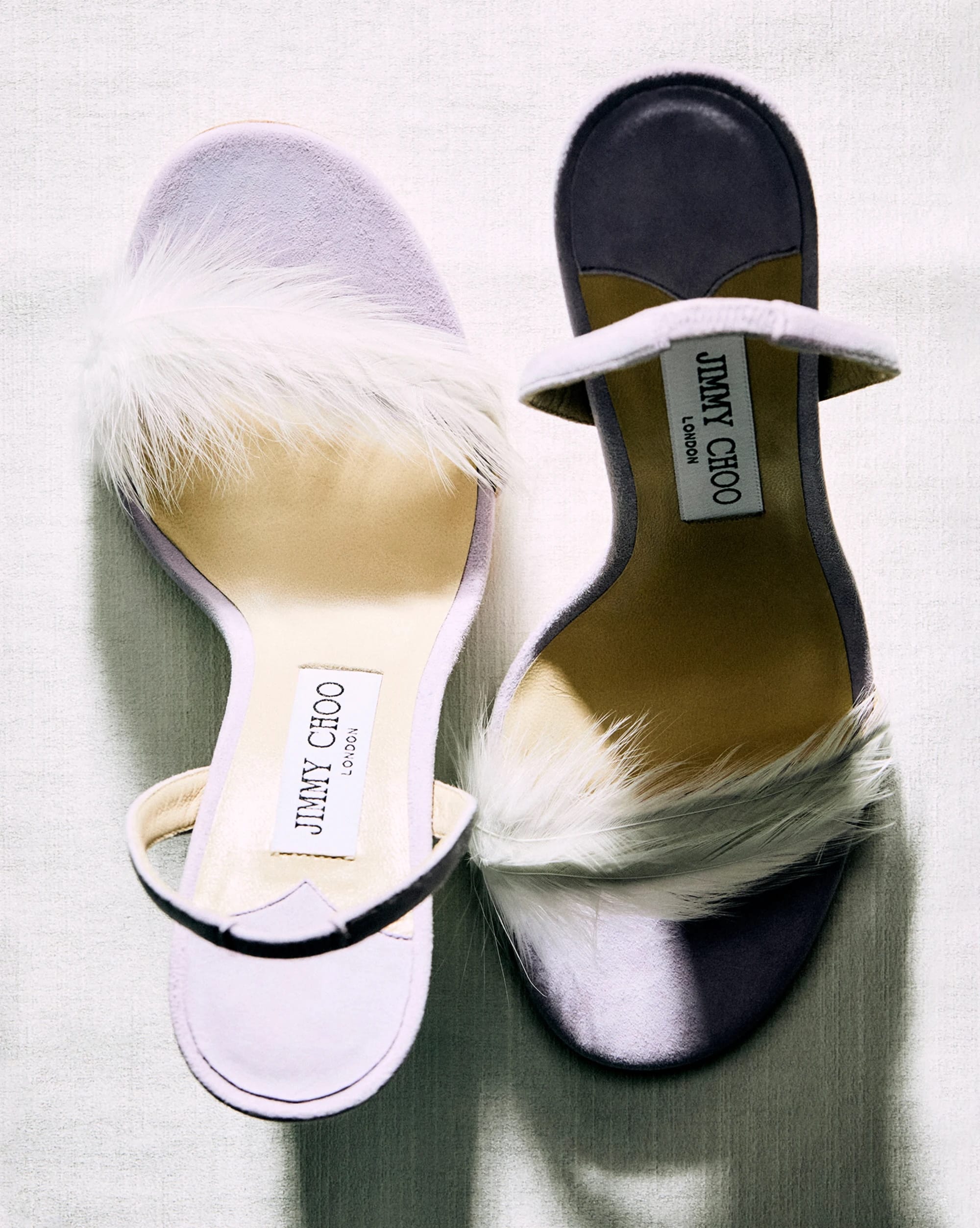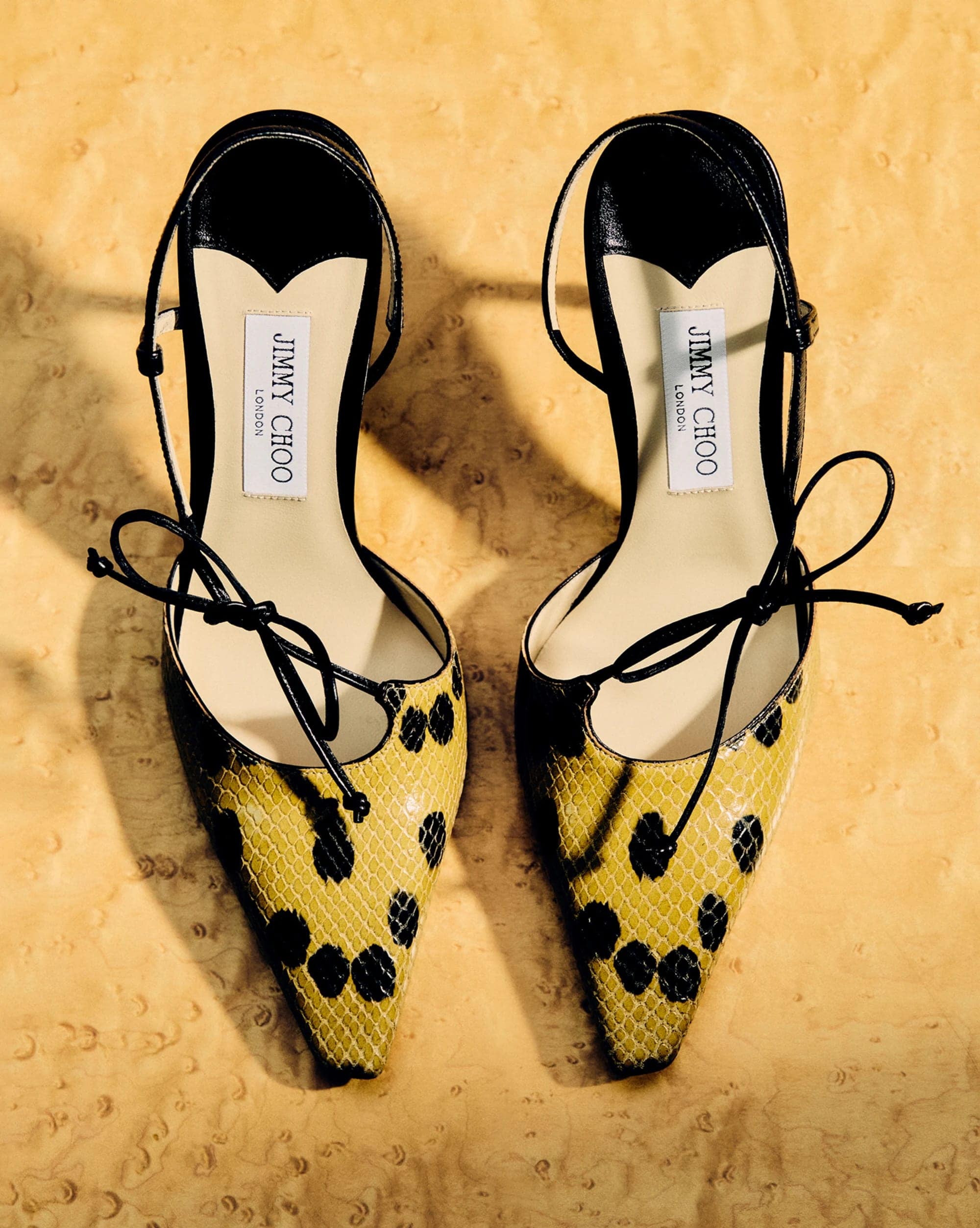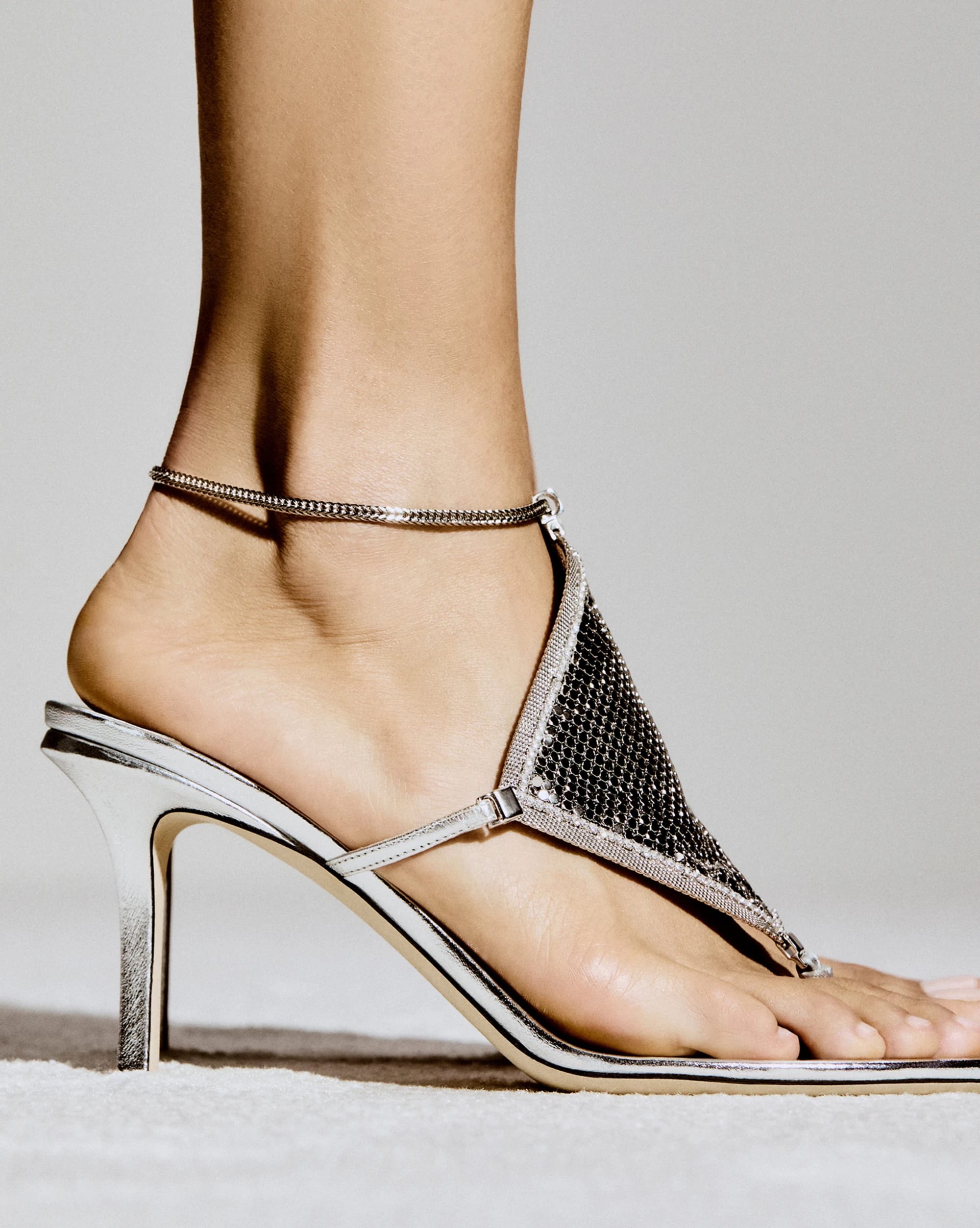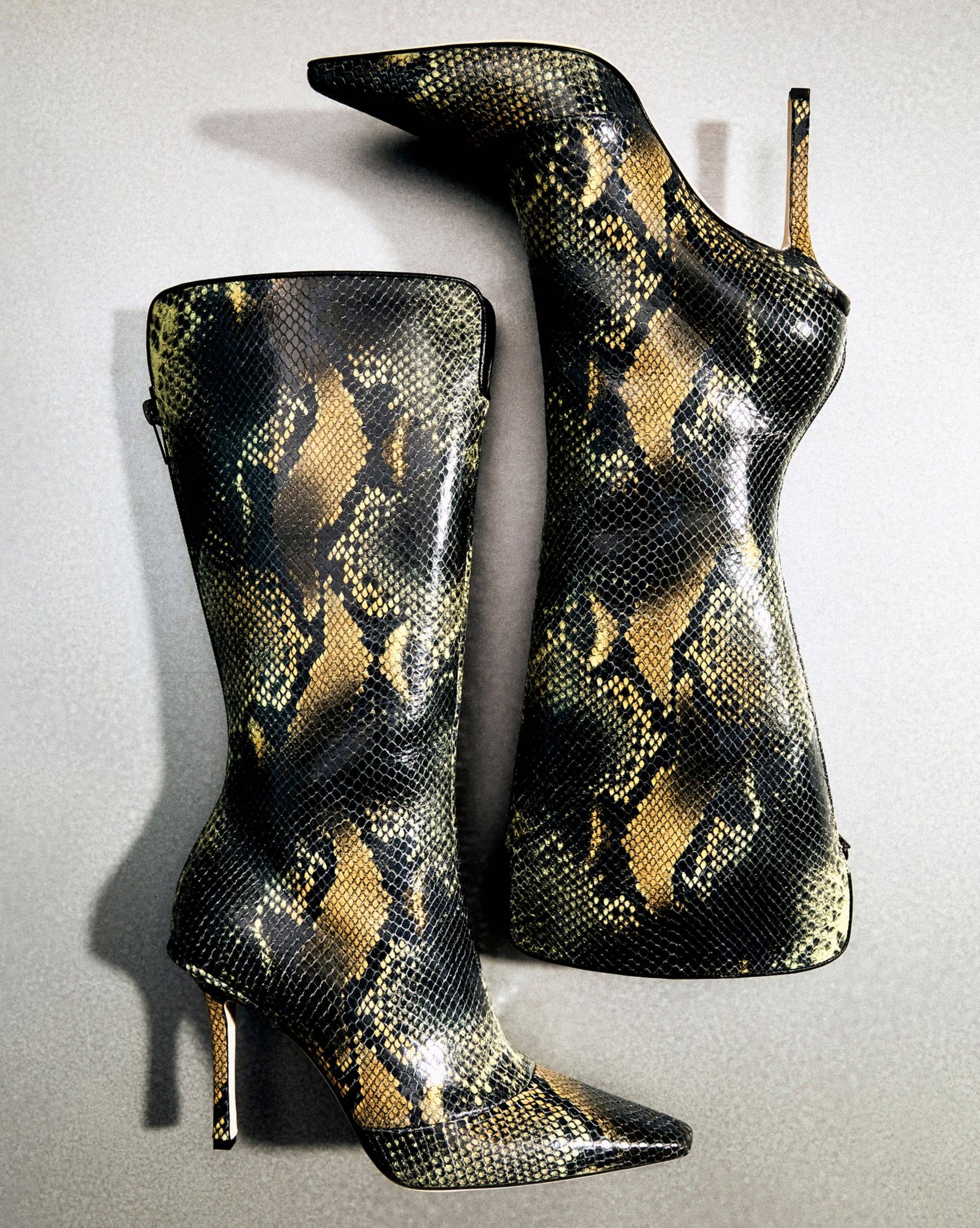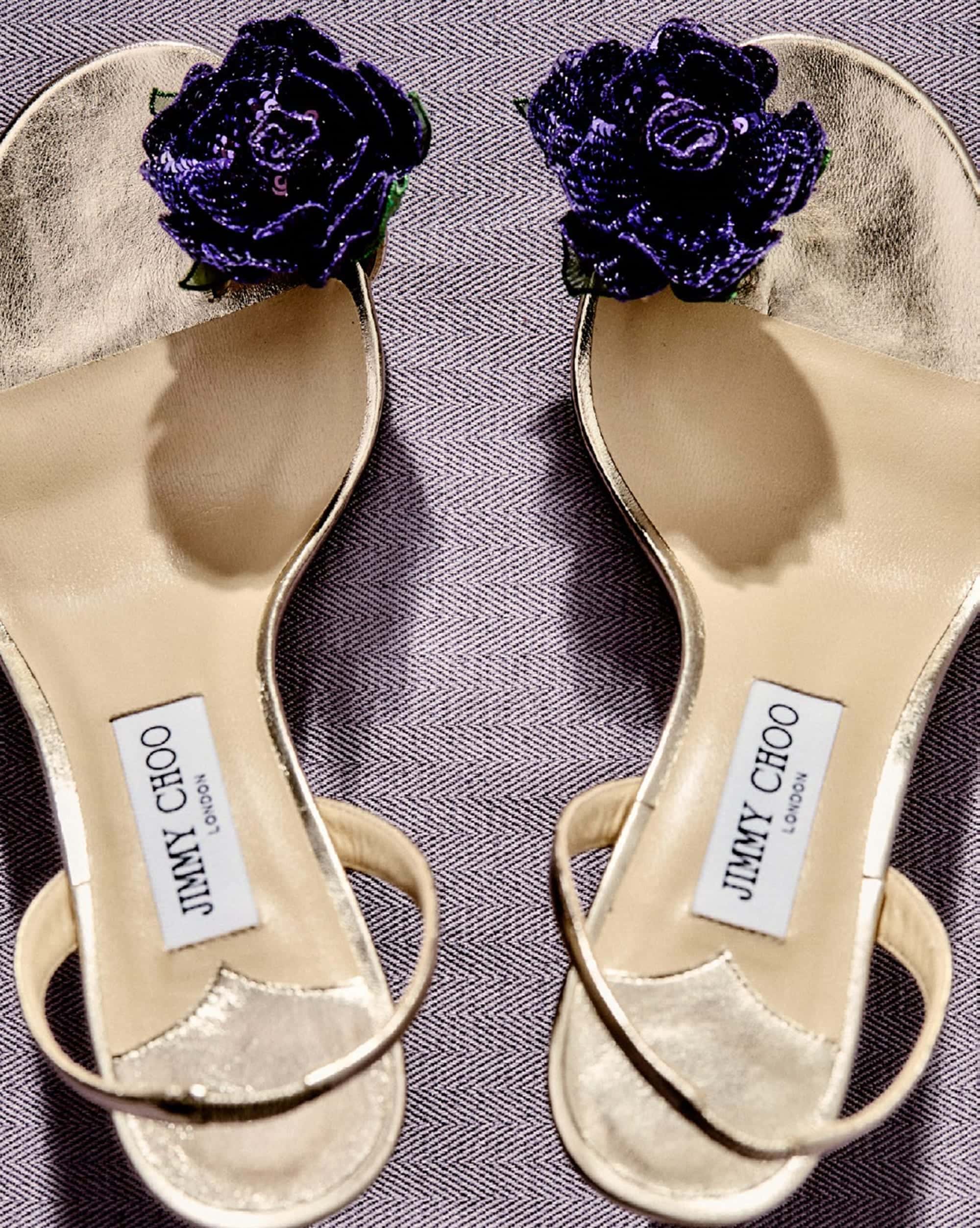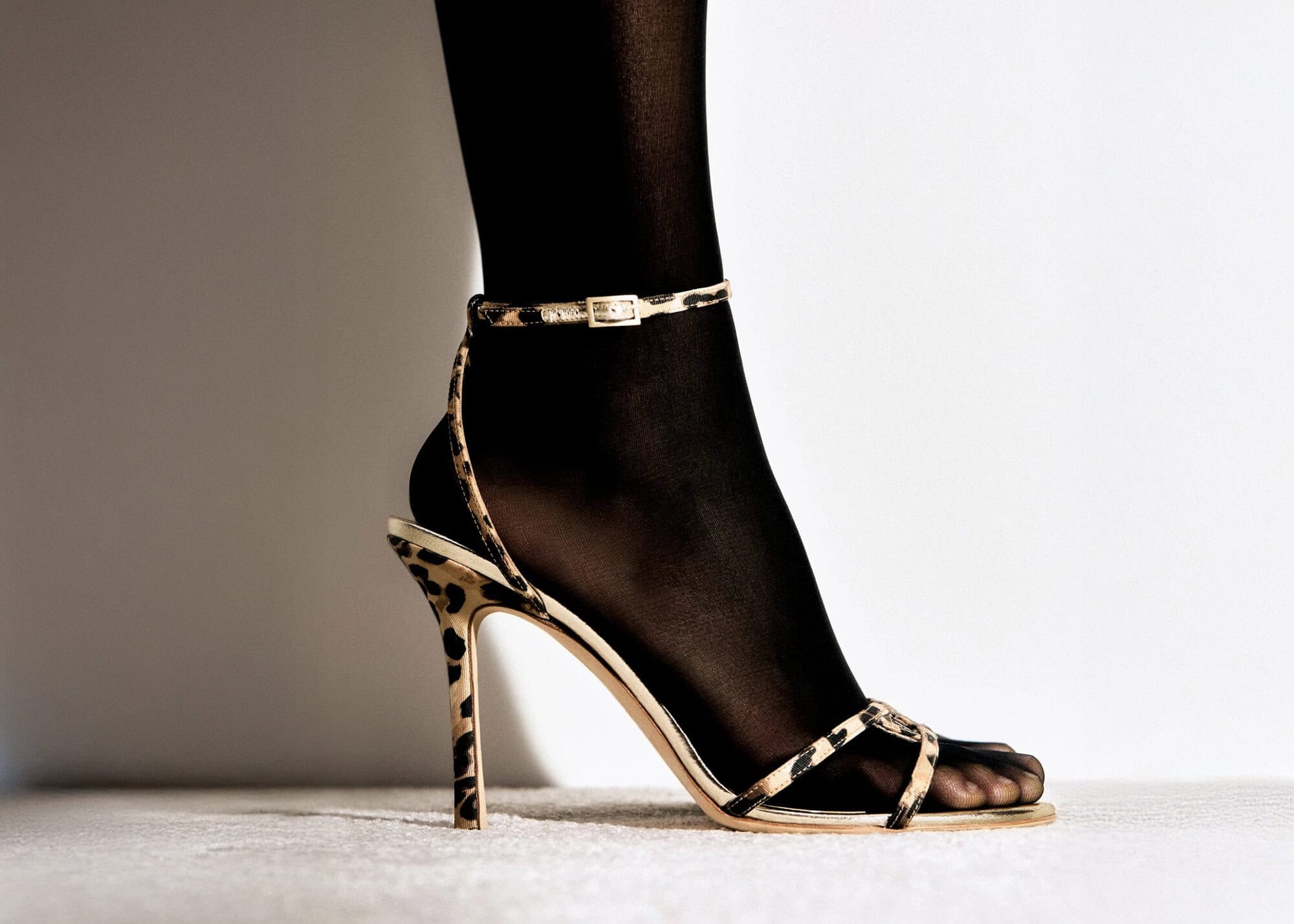Eight styles from 1997 to 2001 re-enter production in a retrospective drop
Jimmy Choo is preparing for its 30th anniversary by reintroducing designs that marked the brand’s early trajectory. The company has selected eight shoe styles from its archive, spanning the years 1997 to 2001, to highlight the visual codes and construction techniques that continue to influence its current output. Rather than reproducing the past, the initiative aims to demonstrate ongoing links between the brand’s origins and present-day design.
The project was developed by Creative Director Sandra Choi in collaboration with designer Conner Ives and fashion curator Alexander Fury. Together, the trio selected designs that marked Jimmy Choo’s entry into ready-to-wear footwear, transitioning from custom work for individual clients—including Princess Diana—into the broader sphere of global fashion.
Each model in the edit represents a specific design principle associated with the label. The Strappy, part of the Spring/Summer 1997 collection, is based on a thong sandal with fine straps arranged to contour the leg. The Slide, introduced in 1999, reflects changing cultural approaches to formality with a flat mint nubuck mule that combines a sleek form with functional appeal.
The influence of television character Carrie Bradshaw features prominently in the archival relaunch. The 72138, created in 1998, gained recognition after it was featured in Sex and the City, where Sarah Jessica Parker’s character famously lost a pair. The current release replicates the original’s lilac suede and feather detailing. “The reissued version stays true to the original, lilac suede with dreamlike feathers, marking the first time it’s returned to production since its debut.”
The collection emphasizes a blend of elegance and practical edge. The Boot, last seen in a 2000 Raymond Meier campaign, is reissued in python-print leather and characterized by a form intended to suggest movement and boldness. “Its shape projects movement and assertiveness.”
Other pieces underscore the label’s interest in surface detail. The Leo, a 1998 leopard-print grosgrain design, was also worn by Carrie Bradshaw in the show’s opening scene. The Bow, from 2000, features a mix of snake-textured leather and animal print tied with narrow leather bows. “The result is unexpected, playful, and confident.”
Choi’s approach continues the brand’s treatment of footwear as central to styling rather than secondary. The Thong, featuring silver chain-link embellishments, connects with early-2000s fashion elements such as asymmetrical cuts and chainmail. “Silvered links wrap the vamp, referencing the handkerchief tops popular at the time. The style moves beyond decoration into structural emphasis.”
The Flower, from 2001, concludes the eight-piece selection. A soft corsage detail sits atop a metallic nappa sandal. “The flower feels like it floats above the foot, a design detail as light as it is deliberate.”
Though the styles originate from a defined period, the brand positions them as relevant today. Jimmy Choo emphasizes that the concepts introduced decades ago—glamour, technical precision, tactile surfaces, and sensuality—remain foundational to its ongoing work. “The collection doesn’t aim to replicate the past, it shows how the foundation laid then still connects to how the brand designs today.”
